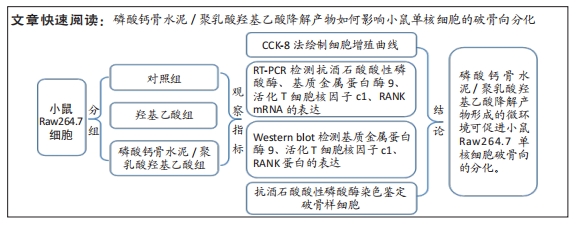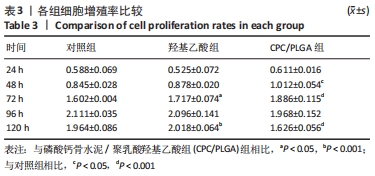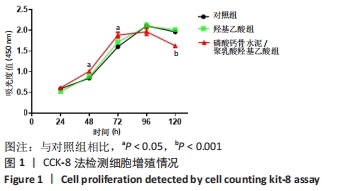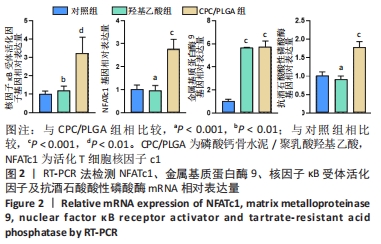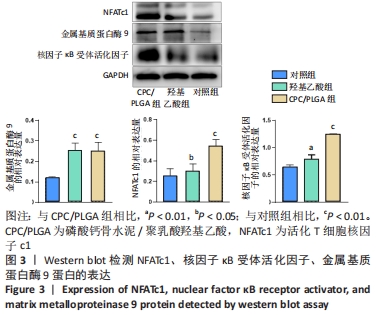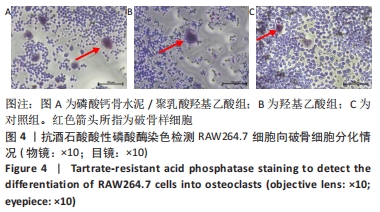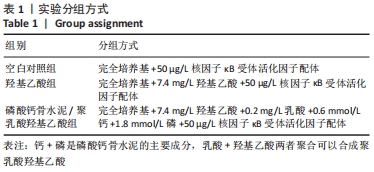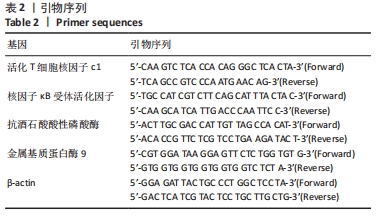[1] KARARGYRIS O, POLYZOIS VD, KARABINAS P, et al. Papineau debridement, Ilizarov bone transport, and negative-pressure wound closure for septic bone defects of the tibia. Eur J Orthop Surg Traumatol. 2014; 24(6): 1013-1017.
[2] LIAO H, WALBOOMERS XF, HABRAKEN WJ, et al. Injectable calcium phosphate cement with PLGA, gelatin and PTMC microspheres in a rabbit femoral defect. Acta Biomater. 2011;7(4):1752-1759.
[3] YAO J, LIU Z, MA W, et al. Three-Dimensional Coating of SF/PLGA Coaxial Nanofiber Membranes on Surfaces of Calcium Phosphate Cement for Enhanced Bone Regeneration. ACS Biomater Sci Eng. 2020;6(5):2970-2984.
[4] ZHANG M, MATINLINNA JP, TSOI J KH, et al. Recent developments in biomaterials for long-bone segmental defect reconstruction: A narrative overview. J Orthop Translat. 2020;22:26-33.
[5] LODOSO-TORRECILLA I, VAN DEN BEUCKEN J, JANSEN JA. Calcium phosphate cements: Optimization toward biodegradability. Acta Biomater. 2021;119:6985.
[6] BAUER T W, MUSCHLER GF. Bone graft materials. An overview of the basic science. Clin Orthop Relat Res. 2000;(371):10-27.
[7] CAMPANA V, MILANO G, PAGANO E, et al. Bone substitutes in orthopaedic surgery: from basic science to clinical practice. J Mater Sci Mater Med. 2014;25(10):2445-2461.
[8] CUI X, HUANG C, CHEN Z, et al. Hyaluronic acid facilitates bone repair effects of calcium phosphate cement by accelerating osteogenic expression. Bioact Mater. 2021;6(11):3801-3811.
[9] MASTROGIACOMO M, CORSI A, FRANCIOSO E, et al. Reconstruction of extensive long bone defects in sheep using resorbable bioceramics based on silicon stabilized tricalcium phosphate. Tissue Eng. 2006;12(5): 1261-1273.
[10] KUMARI A, YADAV SK, YADAV SC. Biodegradable polymeric nanoparticles based drug delivery systems. Colloids Surf B Biointerfaces. 2010;75(1): 1-18.
[11] WU L, DING J. In vitro degradation of three-dimensional porous poly (D,L-lactide-co-glycolide) scaffolds for tissue engineering. Biomaterials. 2004;25(27):5821-5830.
[12] ZHAO D, ZHU T, LI J, et al. Poly(lactic-co-glycolic acid)-based composite bone-substitute materials. Bioact Mater. 2021;6(2):346-360.
[13] AN J, LIAO H, KUCKO NW, et al. Long-term evaluation of the degradation behavior of three apatite-forming calcium phosphate cements. J Biomed Mater Res A. 2016;104(5):1072-1081.
[14] HABRAKEN WJ, LIAO HB, ZHANG Z, et al. In vivo degradation of calcium phosphate cement incorporated into biodegradable microspheres. Acta Biomater. 2010;6(6):2200-2211.
[15] MANTOVANI A, BISWAS SK, GALDIERO MR, et al. Macrophage plasticity and polarization in tissue repair and remodelling. J Pathol. 2013;229(2): 176-185.
[16] UDAGAWA N, KOIDE M, NAKAMURA M, et al. Osteoclast differentiation by RANKL and OPG signaling pathways. J Bone Miner Metab. 2021;39(1):19-26.
[17] MARTIN TJ, SIMS NA. RANKL/OPG; Critical role in bone physiology. Rev Endocr Metab Disord. 2015;16(2):131-139.
[18] WENISCH S, STAHL JP, HORAS U, et al. In vivo mechanisms of hydroxyapatite ceramic degradation by osteoclasts: fine structural microscopy. J Biomed Mater Res A. 2003;67(3):713-718.
[19] WENISCH S, STAHL JP, HORAS U, et al. Ultrastructural examination of cell-mediated degradation of a calcium phosphate ceramic. Unfallchirurg. 2003;106(5):387-391.
[20] 覃媛. 磷酸钙骨水泥/聚乳酸-羟基乙酸复合物凝固初期对 RAW264.7 细胞 RANK 因子表达的影响[D]. 南宁: 广西医科大学,2015.
[21] 曲任飞,麦昱颖,陈晓薇,等.小鼠单核细胞破骨向分化与乳酸浓度的关系[J].中国组织工程研究,2020,24(14):2177-2183.
[22] WALSH NC, CROTTI TN, GOLDRING SR, et al. Rheumatic diseases: the effects of inflammation on bone. Immunol Rev. 2005;208:228-251.
[23] FELIX LANAO RP, LEEUWENBURGH SC, WOLKE JG, et al. Bone response to fast-degrading, injectable calcium phosphate cements containing PLGA microparticles. Biomaterials. 2011;32(34):8839-8847.
[24] SUH KS, CHON S, JUNG WW, et al. Effects of methylglyoxal on RANKL-induced osteoclast differentiation in RAW264.7cells. Chem Biol Interact. 2018;296:18-25.
[25] SUN X, KANG Y, BAO J, et al. Modeling vascularized bone regeneration within a porous biodegradable CaP scaffold loaded with growth factors. Biomaterials. 2013;34(21):4971-4981.
[26] FELIX LANAO RP, LEEUWENBURGH SC, WOLKE JG, et al. In vitro degradation rate of apatitic calcium phosphate cement with incorporated PLGA microspheres. Acta Biomater. 2011;7(9):3459-3468.
[27] LU T, HE F, YE J. Physicochemical Properties, In Vitro Degradation, and Biocompatibility of Calcium Phosphate Cement Incorporating Poly(lactic-co-glycolic acid) Particles with Different Morphologies: A Comparative Study. ACS Omega. 2021;6(12):8322-8331.
[28] ASAGIRI M, TAKAYANAGI H. The molecular understanding of osteoclast differentiation. Bone. 2007;40(2):251-264.
[29] SHARMA A, SHARMA L, GOYAL R. Molecular Signaling Pathways and Essential Metabolic Elements in Bone Remodeling: An Implication of Therapeutic Targets for Bone Diseases. Curr Drug Targets. 2021;22(1):77-104.
[30] WANG J, ZHENG H, MA R. Natural Occurring Compounds Inhibit Osteoclastogenesis via Targeting NFATc1-related Signaling Pathways. Curr Drug Targets. 2020;21(4):358-364.
[31] ZHANG K, BARRAGAN-ADJEMIAN C, YE L, et al. E11/gp38 selective expression in osteocytes: regulation by mechanical strain and role in dendrite elongation. Mol Cell Biol. 2006;26(12):4539-4552.
[32] Brown EM, Pollak M, Seidman CE, et al. Calcium-ion-sensing cell-surface receptors. N Engl J Med. 1995;333(4):234-240.
[33] ZAIDI M, ADEBANJO OA, MOONGA BS, et al. Emerging insights into the role of calcium ions in osteoclast regulation. J Bone Miner Res. 1999; 14(5):669-674.
[34] DENTON RM. Regulation of mitochondrial dehydrogenases by calcium ions. Biochim Biophys Acta. 2009;1787(11):1309-1316.
[35] ZAIDI M, DATTA HK, PATCHELL A, et al. ‘Calcium-activated’ intracellular calcium elevation: a novel mechanism of osteoclast regulation. Biochem Biophys Res Commun. 1989;163(3):1461-1465.
[36] ARIOKA M, TAKAHASHI-YANAGA F, TATSUMOTO N, et al. Inorganic phosphate-induced impairment of osteoclast cell-cell fusion by the inhibition of AP-1-mediated DC-STAMP expression. Biochem Biophys Res Commun. 2017;493(1):9-13.
[37] MOZAR A, HAREN N, CHASSERAUD M, et al. High extracellular inorganic phosphate concentration inhibits RANK-RANKL signaling in osteoclast-like cells. J Cell Physiol. 2008;215(1):47-54.
[38] 赵崇莹. 可注射磷酸钙骨水泥凝固初期钙磷离子的变化对成骨细胞的影响[D]. 南宁: 广西医科大学,2013.
[39] 梁翠薇. 磷酸钙骨水泥/聚乳酸-羟基乙酸复合微球对成骨细胞 RANKL 和 OPG 因子表达的影响[D]. 南宁: 广西医科大学,2016.
[40] DEZEREGA A, MADRID S, MUNDI V, et al. Pro-oxidant status and matrix metalloproteinases in apical lesions and gingival crevicular fluid as potential biomarkers for asymptomatic apical periodontitis and endodontic treatment response. J Inflamm (Lond). 2012;9(1):8.
[41] MONDAL S, ADHIKARI N, BANERJEE S, et al. Matrix metalloproteinase-9 (MMP-9) and its inhibitors in cancer: A minireview. Eur J Med Chem. 2020;194:112260.
[42] GUO J, ZENG X, MIAO J, et al. MiRNA-218 regulates osteoclast differentiation and inflammation response in periodontitis rats through Mmp9. Cell Microbiol. 2019;21(4):e12979.
[43] SHIN Y, GHATE NB, MOON B, et al. DNMT and HDAC inhibitors modulate MMP-9-dependent H3 N-terminal tail proteolysis and osteoclastogenesis. Epigenetics Chromatin. 2019;12(1):25.
[44] KIM Y, KIM J, LEE H, et al. Tetracycline Analogs Inhibit Osteoclast Differentiation by Suppressing MMP-9-Mediated Histone H3 Cleavage. Int J Mol Sci. 2019;20(16):4038.
[45] PAULA-SILVA F WG, ARNEZ MFM, DE CAMPOS CHAVES LAMARQUE G, et al. Osteoclast formation, inflammation, and matrix metalloproteinase-9 are downregulated in bone repair following root canal treatment in dogs teeth. Clin Oral Investig. 2021;25(7):4699-4707.
|
